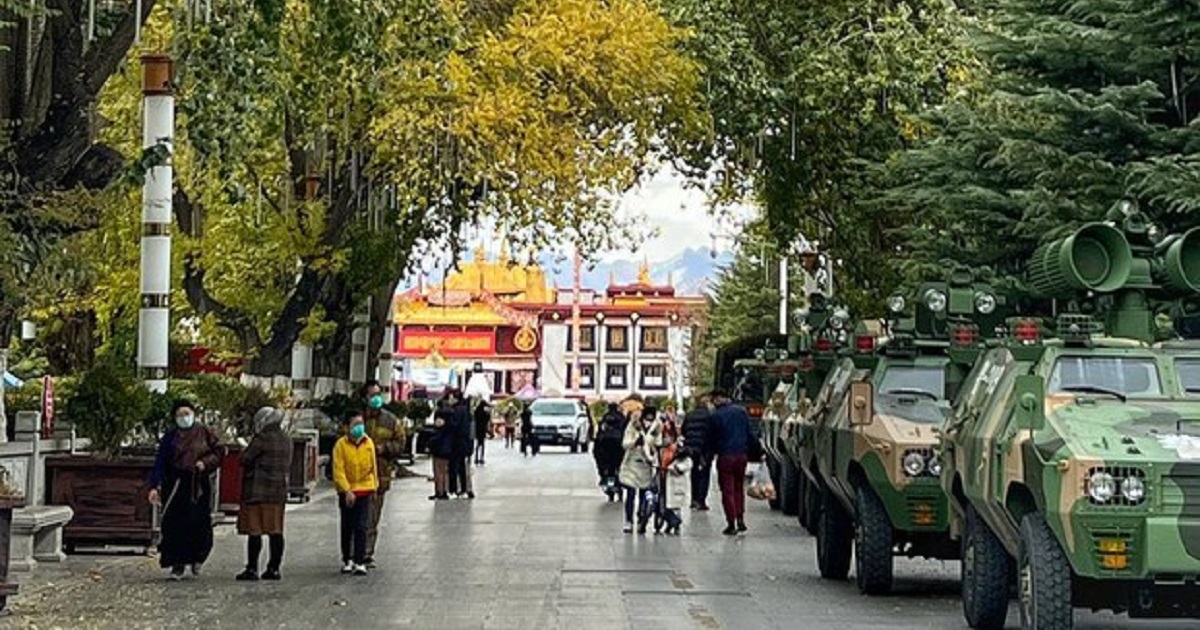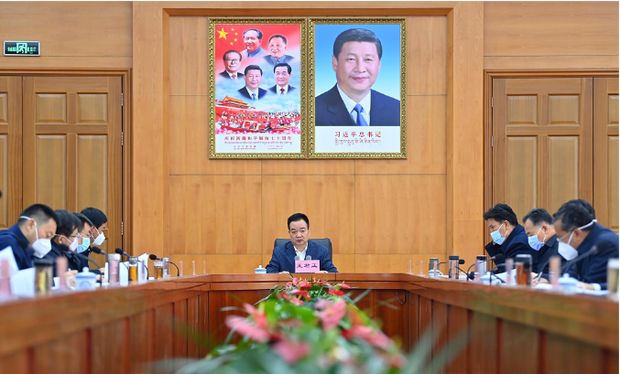Impact of China protests in Tibet
On the day of protests in Chinese cities, the Office of the Leading Group for Lhasa’s Response to the New Coronavirus Pneumonia Epidemic issued an announcement titled “Notice of Behavior” to Tibetans in Lhasa. While COVID-related public notices are frequently issued, the “Notice of Behavior” dated Nov. 27 is extraordinarily long and comprehensive in laying out the prohibitions and the relevant laws applicable for punishment. The notice carried 44 points on prohibited behaviors with point number 28 warning that “Those who use the novel coronavirus infection pneumonia epidemic to create, spread rumors, incite secession, undermine national unity, or incite subversion of state power, overthrow the socialist system are suspected of and shall be held criminally responsible for violating Article 103, paragraph 2, of the Criminal Law of the People’s Republic of China and Article 105, paragraph 2 of the crime of secession or incitement to subvert state power.”
The “notice of behavior” was backed up with reinforcement of law enforcement. The Jamestown Foundation’s senior fellow Willy Wo-Lap Lam wrote that the party’s Central Military Commission had deployed more People’s Armed Police and soldiers to big cities as well as to Xinjiang and Tibet. However, police and military personnel have been ordered to act with restraint on a selective basis and to minimize the number of arrests of residents or students.”

Deployment of armored vehicles in front of Lhasa’s sacred Jokhang temple (Photo via Radio Free Asia)
A day after protests erupted in Chinese cities, the Party Secretary of “Tibet Autonomous Region,” Wang Junzheng, presiding over a standing committee meeting, issued instructions to prioritize stability and struggle against separatists to safeguard the political security of China.
On Nov. 28, the authorities suspended the religious activities in Kardze Monastery in Sichuan, leaving the monks and the local Tibetans puzzled over the reason. Monks in the monastery could not congregate for their religious offering prayers and local religious Tibetans’ access to the monastery was limited.
Similarly, Tibetans and others in Xining in Qinghai were ordered by the authorities to stay confined to their homes beginning the evening of Nov. 27. While the authorities came for home visits to assess the COVID situation, the public were prohibited from leaving their homes.

Party Secretary, Wang Junzheng, presiding over the standing committee meeting on November 28. (Photo via state media)
Takeaways
Since the loss of lives in the horrific burning of an apartment building in Xinjiang catalyzed the protests in Chinese cities by the students and urban middle class, it is deducible that information travels from the far west to east rapidly. But the reverse is not true, at least in terms of spontaneity in Tibet. The only point of view that travels from China to Tibet nonstop is in the form of propaganda and decrees issued by Zhongnanhai in Beijing and executed on the ground by the party and government cadres.
The protests in Chinese cities are remarkable for their leaderless characteristic and spread throughout China, which was not seen even during the 1989 Tiananmen protest. When the Chinese elite spoke out in unison, the party budged in mollifying its social contract with the Chinese people. COVID restrictions across the Chinese heartland are being eased amidst protest participants being tracked down and digital traces of the protests being erased one person at a time. Despite the party’s show of power, by and large the Chinese people won in this protest.
But what about the Tibetans in Tibet and Uyghurs in Xinjiang or East Turkestan, as the Uyghurs prefer to call their homeland?
Double standards
It is noteworthy that there wasn’t a single concurrent solidarity protest in both Xinjiang and Tibet. It should be noted that while information from the far west travels rapidly to the Chinese heartland in the east, the reverse is not true. This is glaringly clear from the current round of protests in China. Tibetans by and large were unaware of the massive but quickly cooled down protests in China. When asked, a Tibetan in Lhasa told the International Campaign for Tibet, “ I have not heard about the protests in China. I think 95% of the Tibetans would be unaware of the protests in Chinese cities.”
Second, unlike the protests by Chinese in China, protests in Tibet and Xinjiang are perpetually labeled as “separatism” or “extremism” irrespective of their genuine grievances and aspirations. In Tibet, as noted above, the party is ready to crush a nonexistent protest in the name of “anti-separatism” and “stability” while the events were unfolding in the Chinese cities.
Third, in the eyes of the party, the Chinese demands are legitimate but the Tibetan demands would be “separatism” if a concurrent protest sparks off in Tibet. This is true not only from the protests in China this week but also observed during the Chinese migrants’ protest in Lhasa a little over a month ago. Because of the suffocating COVID measures in Lhasa, when the Chinese migrants staged a coordinated and large-scale protest on Oct. 28 to be allowed back to their hometowns, they were on their way home the next day. They exited so quickly that the authorities had a hard time clearing the traffic from Lhasa to China. It must be noted that Tibetans’ participation in the Chinese migrants’ protest in Lhasa was minimal except for a possible few joining them.
Change brewing up
While a horrific fire in Xinjiang catalyzed the protests in China this week with the Chinese venting out their frustration at COVID controls on their lives to the point of uttering “Xi Jinping, step down”, none of the protesters in China shouted “Free Tibet” or “Free Xinjiang.” The Chinese urban middle class and the students could relate their lives under COVID lockdowns to those burned to death in an apartment building under COVID lockdown in the far west. But they still couldn’t empathize with how it feels to live a suffocating and controlled life from day one of the establishment of the People’s Republic of China in 1949.
But that seems to be changing.
Unlike their kin at home, Chinese in solidarity protests in foreign countries, most prominently in the United States, uttered the previously unheard of during Chinese protests even in foreign countries. Some of the protesters shouted the unimaginable “Free Tibet, Free Xinjiang” during their solidarity protests for their compatriots at home.
One may dismiss this as mere symbolism or an “isolated case.” One voice in a country of 1.4 billion people does not change things is what is often argued.
But in a changing China, leaders throughout China’s history of protests and revolutions in the past two centuries have almost all the time carried home a spark lit and ideas sharpened in foreign countries. It might not be different this time round as well thanks to COVID.
